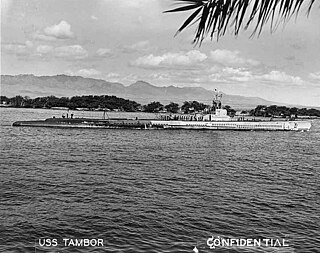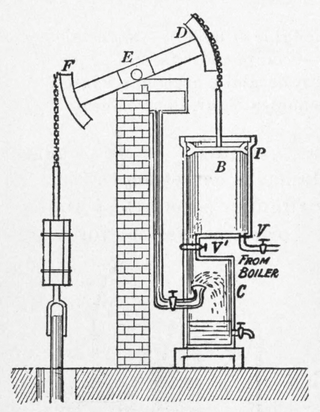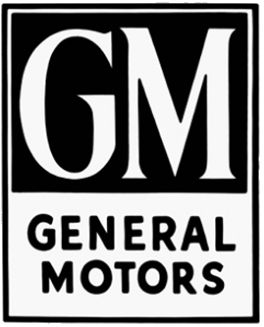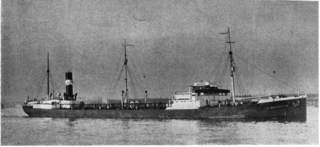
A piston is a component of reciprocating engines, reciprocating pumps, gas compressors, hydraulic cylinders and pneumatic cylinders, among other similar mechanisms. It is the moving component that is contained by a cylinder and is made gas-tight by piston rings. In an engine, its purpose is to transfer force from expanding gas in the cylinder to the crankshaft via a piston rod and/or connecting rod. In a pump, the function is reversed and force is transferred from the crankshaft to the piston for the purpose of compressing or ejecting the fluid in the cylinder. In some engines, the piston also acts as a valve by covering and uncovering ports in the cylinder.

A reciprocating engine, also often known as a piston engine, is typically a heat engine that uses one or more reciprocating pistons to convert high temperature and high pressure into a rotating motion. This article describes the common features of all types. The main types are: the internal combustion engine, used extensively in motor vehicles; the steam engine, the mainstay of the Industrial Revolution; and the Stirling engine for niche applications. Internal combustion engines are further classified in two ways: either a spark-ignition (SI) engine, where the spark plug initiates the combustion; or a compression-ignition (CI) engine, where the air within the cylinder is compressed, thus heating it, so that the heated air ignites fuel that is injected then or earlier.

The Gato class of submarines were built for the United States Navy and launched in 1941–1943. Named after the lead ship of the class, USS Gato, they were the first mass-production U.S. submarine class of World War II.

USS Pompano (SS-181), a United States Porpoise-class submarine, was the second ship of the United States Navy to be named for the pompano.

The Tambor-class submarine was a United States Navy submarine design, used primarily during World War II. They were the USN's first fully successful fleet submarine, and began the war close to the fighting. Six of the class were in Hawaiian waters or the Central Pacific on 7 December 1941, with Tautog at Pearl Harbor during the attack. They went on to see hard service; seven of the twelve boats in the class were sunk before the survivors were withdrawn from front-line service in early 1945; this was the highest percentage lost of any US submarine class. Tautog was credited with sinking 26 ships, the largest number of ships sunk by a US submarine in World War II. The Tambors attained the top speed of 21 knots (39 km/h) and range of 11,000 nautical miles (20,000 km) of the preceding Sargo class, and improvements included six bow torpedo tubes, a more reliable full diesel-electric propulsion plant, and improved combat efficiency with key personnel and equipment relocated to the conning tower. In some references, the Tambors are called the "T Class", and SS-206 through SS-211 are sometimes called the "Gar class".

The Sargo-class submarines were among the first United States submarines to be sent into action after the Japanese attack on Pearl Harbor, starting war patrols the day after the attack, having been deployed to the Philippines in late 1941. Similar to the previous Salmon class, they were built between 1937 and 1939. With a top speed of 21 knots, a range of 11,000 nautical miles (20,000 km), and a reliable propulsion plant, along with the Salmons they were an important step in the development of a true fleet submarine. In some references, the Salmons and Sargos are called the "New S Class", 1st and 2nd Groups.

The United States Navy Salmon-class submarines were an important developmental step in the design of the "fleet submarine" concept during the 1930s. An incremental improvement over the previous Porpoise class, they were the first US submarine class to achieve 21 knots with a reliable propulsion plant, allowing them to operate with the Standard-type battleships of the surface fleet. Also, their 11,000 nautical miles (20,000 km) unrefueled range would allow them to operate in Japanese home waters. These rugged and dependable boats provided yeoman service during World War II, along with their immediate successors, the similar Sargo class. In some references, the Salmons and Sargos are called the "New S Class", 1st and 2nd Groups.
William Benson Mayo was chief power engineer for the Ford Motor Company.

USS Alameda, was a United States Navy tanker in commission from 1919 to 1922. She was built as the civilian tanker SS Alameda, but transferred to the U.S. Navy after completion in 1919. She was sold for commercial service and operated under the names SS Olean and SS Sweep before she was transferred to the Navy again in World War II as USS Silver Cloud (IX-143).

The Seattle-Tacoma Shipbuilding Corporation was an American corporation which built escort carriers, destroyers, cargo ships and auxiliaries for the United States Navy and merchant marine during World War II in two yards in Puget Sound, Washington. It was the largest producer of destroyers (45) on the West Coast and the largest producer of escort carriers of various classes (56) of any United States yard active during World War II.
SS Empire Bunting was a 6,318 GRT cargo ship which was built in 1919. She saw service between the wars under the US flag and was transferred to the UK Ministry of War Transport in the Second World War. She made a number of cross-Atlantic voyages, often sailing in convoys. She ended her career by being sunk as a blockship on the Normandy coast, supporting the allied landings there in 1944.

The PC-461-class submarine chasers were a class of 343 submarine chasers constructed mainly for the US Navy and built from 1941 to 1944. The PC-461s were based primarily on two experimental submarine chasers, PC-451 and PC-452. While PC-461 began the series, the first of the class to enter service was PC-471. As part of the Lend-Lease program, 46 ships of this class were transferred to allies of the United States. Fifty-nine PC-461s were converted to other types of patrol vessels. Eight vessels of this class were lost, and one vessel was lost after conversion to a PGM-9-class motor gunboat. Only one of the class, USS PC-566 commanded by Lieutenant Commander Herbert G. Claudius, actually sank a submarine, U-166, during World War II; however, the website 'Patrol Craft Sailors Association' cites PC-461-class ships sinking or assisting sinking up to 6 German and Japanese subs.

Körting Hannover AG is a long-standing industrial engineering company in Hanover.

In mechanical engineering, the cylinders of reciprocating engines are often classified by whether they are single- or double-acting, depending on how the working fluid acts on the piston.
Nordberg Manufacturing Company was a manufacturer of steam engines, large diesel engines, pumps, hoists and compressors for the mining and quarry industries located in Milwaukee, Wisconsin.

The Cleveland Diesel Engine Division of General Motors (GM) was a leading research, design and production facility of diesel engines from the 1930s to the 1960s that was based in Cleveland, Ohio. The Cleveland Diesel Engine Division designed several 2 stroke diesel engines for submarines, tugboats, destroyer escorts, Patapsco-class gasoline tankers and other marine applications. Emergency generator sets were also built around the Cleveland Diesel and were installed in many US warships. The division was created in 1938 from the GM-owned Winton Engine Corporation and was folded into the GM Electro-Motive Division in 1962. The engines continue in use today on older tugs.
Reese James Llewellyn was a Welsh-American businessman. He was the co-founder and president of Llewellyn Iron Works, a company based in Los Angeles, which provided iron works and steel for the construction of buildings in Southern California, the Western United States, Mexico, and South America. The company also produced steel from iron ore and during the World War I shipbuilding boom it was one of the largest manufacturers of triple-expansion steam engines on the West Coast.
Rentschler is a surname. Notable people with the surname include:
Olockson was a steam cargo ship built in 1918–1919 by Guy M. Standifer Construction Company of Vancouver for the United States Shipping Board as part of the wartime shipbuilding program of the Emergency Fleet Corporation (EFC) to restore the nation's Merchant Marine. In March 1920, only on her second voyage, the vessel caught fire and had to be abandoned by the crew. The ship was subsequently towed to Baltimore where she was broken up in 1924.

J. A. Moffett Jr. was an oil tanker built in 1920–1921 by the Federal Shipbuilding Company of Kearney for the Standard Oil Company of New Jersey with the purpose of carrying oil and petroleum products. Originally built as a steamship, the vessel had her engines changed in 1927 converting her into a motor vessel. She was torpedoed in 1942, killing the captain, before being abandoned, towed and sold for scrap.














